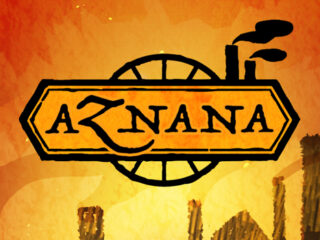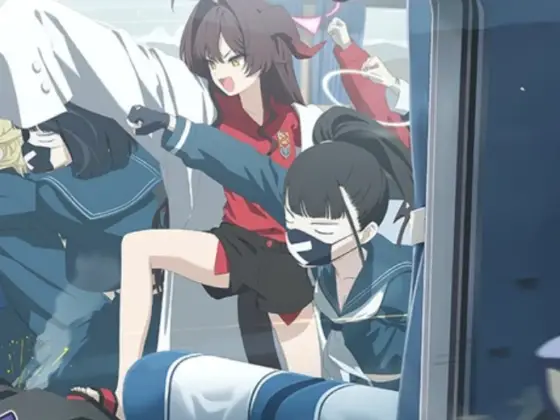Like many gamers who grew up during the SNES era, I hold a certain fondness for the JRPG.
However, since the golden age of the JRPG during the 16-bit era, the genre has suffered some rough times. Though the JRPG continued to produce classics, it also began to fall into a serious rut of repetitive design. Before long games like Baldur’s Gate, Knights of the Old Republic and Morrowind started advancing the RPG in bold new directions. The JRPG, however, chose the path of tradition, and in many ways suffered as a result.
It’s with this history lesson in mind that I approached The World Ends With You with some measure of trepidation. I greatly respect the JRPG, but I can’t say I’ve played a JRPG in recent times that has genuinely compelled me. Admittedly I’d heard rumblings of the game’s quality when it was originally released on the Nintendo DS, but the cynic in me expected a fairly standard JRPG experience.
Initially, that cynic was appeased quite nicely. TWEWY’s opening introduces us to its protagonist, Neku Sakuraba. He’s an antisocial young man straight out of the big book of JRPG emo character clichés. What’s more it’s not long before he finds a magical pin which allows him to read the thoughts of others, and you can just start to hear the faint drums of the “boy with a destiny to save the world” plotline banging slowly in the distance.
But, and I can’t emphasize this enough, that’s not The World Ends With You’s game at all. Take for instance that plot I was initially so quick to judge. Instead of another tired tale of a loner and his world saving destiny, it’s actually a rather clever sci-fi tale that revolves around Neku’s realization he has unwillingly become part of an elaborate game being played by forces with interests far greater than conquering or ending our world.
From that point, I must say TWEWY’s story becomes one of my favorites in all of gaming. Trying to fully detail its various twists in turns in a coherent and concessive way would be as fruitless as it would be spoilerish, but I can honestly say that at no point was I able to successfully predict what the next moment would bring and I’m so very glad for it. Admittedly there is a bit of a learning curve to the plot as it’s generally ambiguous nature requires you to pay strict attention to every little story tidbit, but take the time to really let it develop and you’ll be rewarded with a story that feels like what may happen if a superteam of sci-fi anime directors joined up to re-write The Matrix.
If anything, the presentation fueling that tale is even more impressive. The art style is fairly standard from a purely conceptual standpoint, but is executed with just enough flair to stand out. The soundtrack on the other hand is simply exceptional. It trades the more traditional orchestra style you find in a lot of classic JRPGs for a more modern hip hop and dance influenced sound, and some unique character to the game as a result. It’s worth noting that everything on display here in terms of cultural style is decidedly Japanese, so if you have any particular aversion to that style, you may be slightly put off. Otherwise this is the kind of visual and audio tour de force that reminds you to appreciate the capabilities of gaming as a sensory experience.
But really it’s the gameplay that surprised me most about TWEWY. Instead of your traditional turn-based JRPG combat, here you get a much more active combat system that revolves around the concepts of teamwork, and the use of ability granting pins. It’s a system as complicated and intricate as the game’s plot, but basically you’re going to be using various tapping and swiping motions in order to trigger different combat abilities in a rhythm which will then allow you to pull off deadly combos.
I wish there was something I could easily compare it to so you could get a better idea regarding the specifics, but alas it’s a pretty unique combat system that doesn’t afford me such a cheap out. Instead I will just say that it’s that rare mix of on your feet strategy with heart pumping action that you rarely find from your more traditional JRPGs, or RPGs in general for that matter.
At the same time in researching the differences from the DS version to the Android one, it became quite clear that the lack of a second screen, stylus and basic d-pad and button controls, forced some concessions to be made for this version’s combat system. While I can’t accurately speak from personal experience regarding if this version suffers as a result of these concessions, I will say that there were quite a few times when I thought the pinpoint precision of a stylus would have come in handy. Also, seeing the original version played out did leave me with the lingering feeling of not playing the definitive experience of the combat system. That being said, I truly feel this is the best it could have possibly been converted to this format.
But this does bring us to the game’s price. At $17.99 this is likely the most you’ll spend on an Android game all year, making it a tough sale regardless of overall quality. However unless you happen to still own or have easy access to the original DS version at a cheaper cost, I implore you to not let the price become the deciding factor in your purchase if at all possible.
The World Ends With You is not only a modern day masterpiece of a JRPG, but is quite simply one of the more incredible gaming experiences this veteran of gaming has had the pleasure of playing.
Is it Hardcore?
Absolutely.
By skirting the cliches of its genre, The World Ends With You manages to defy nearly all expectations.




























